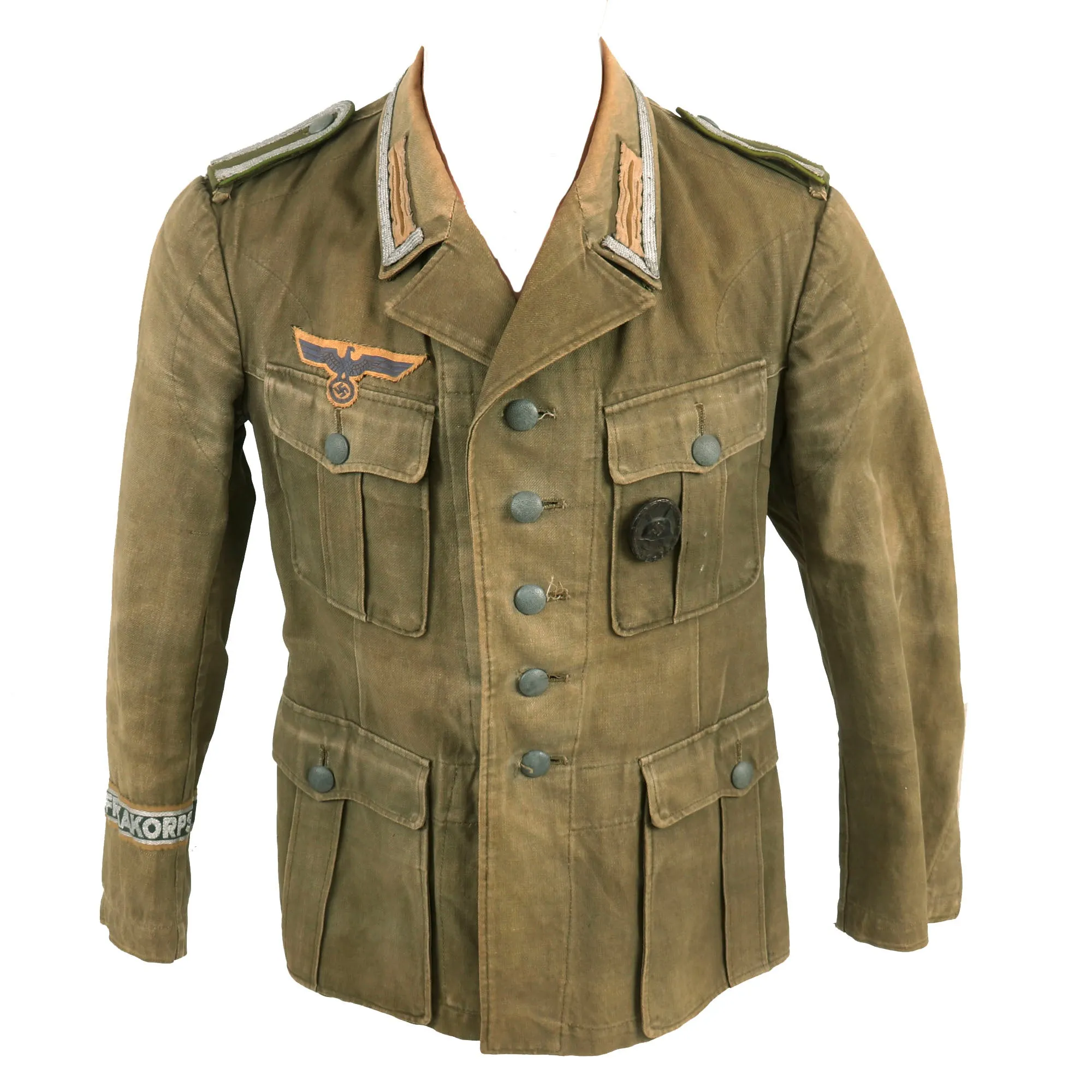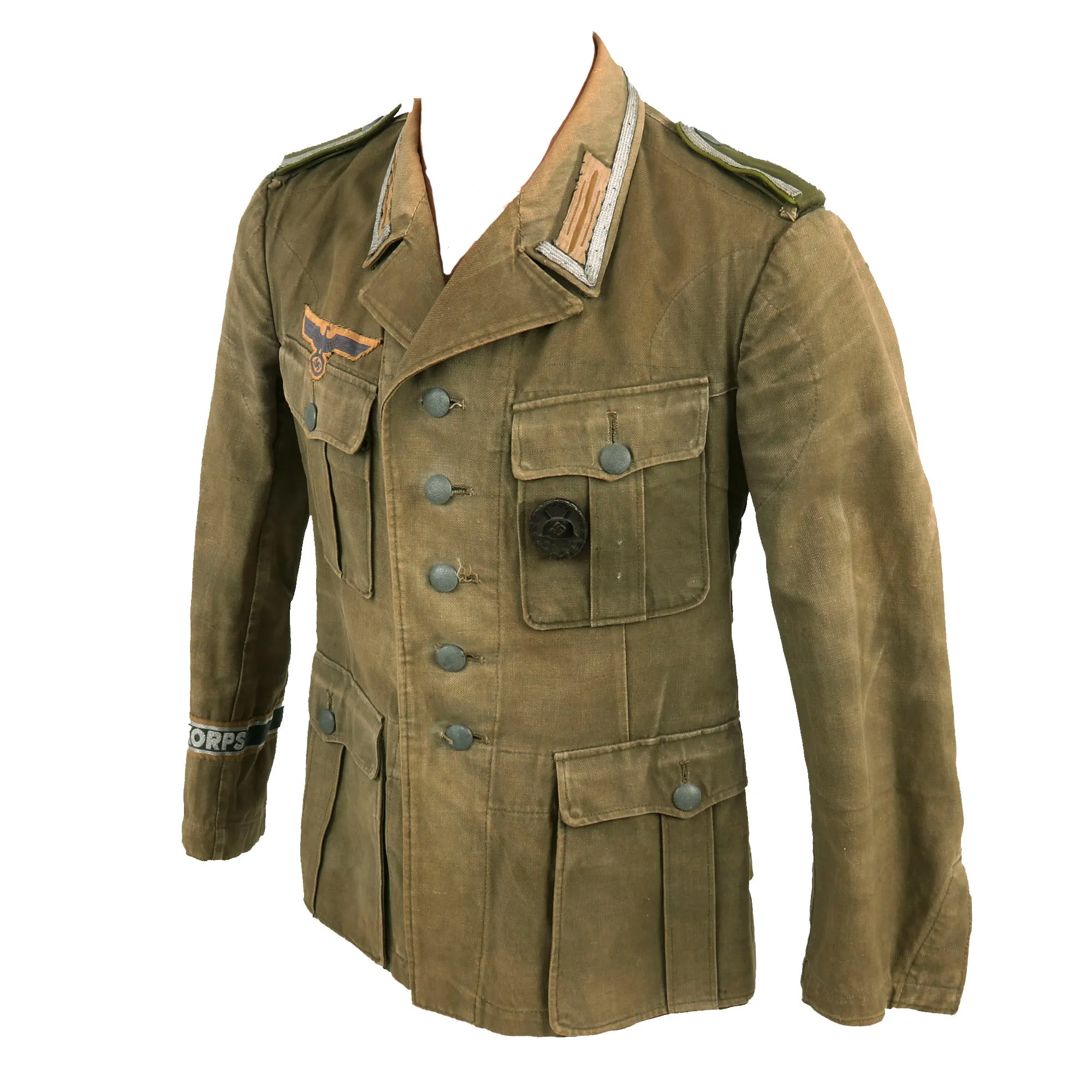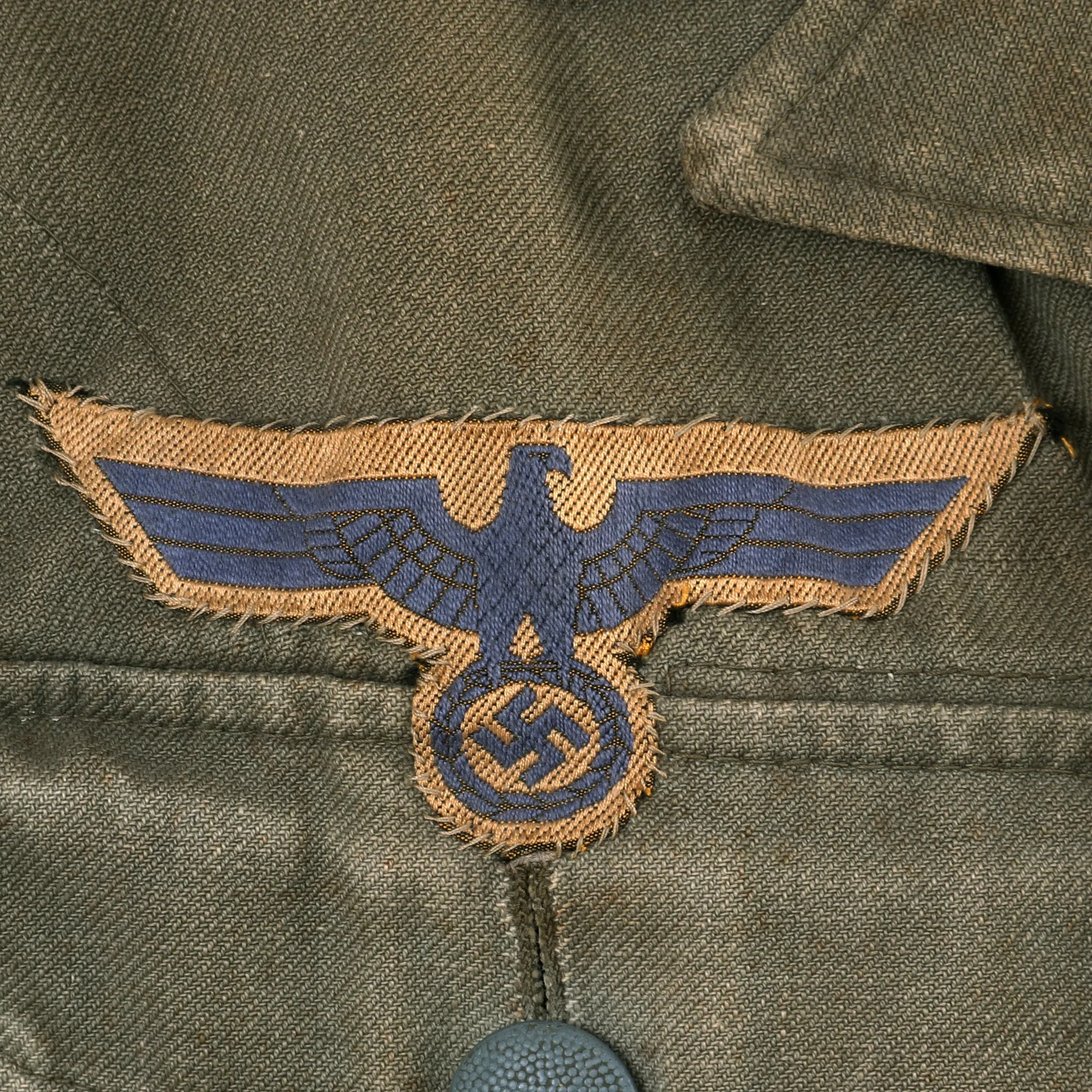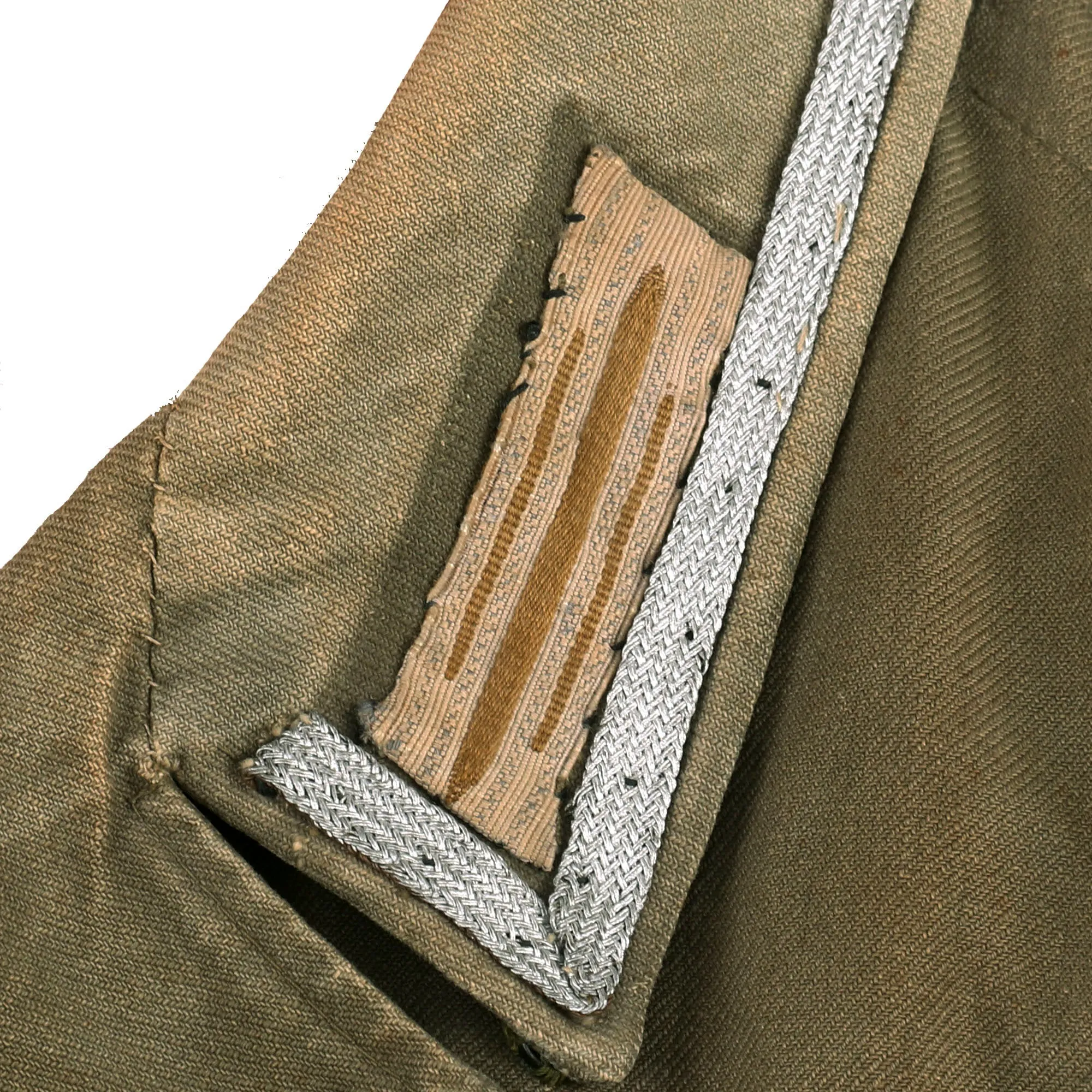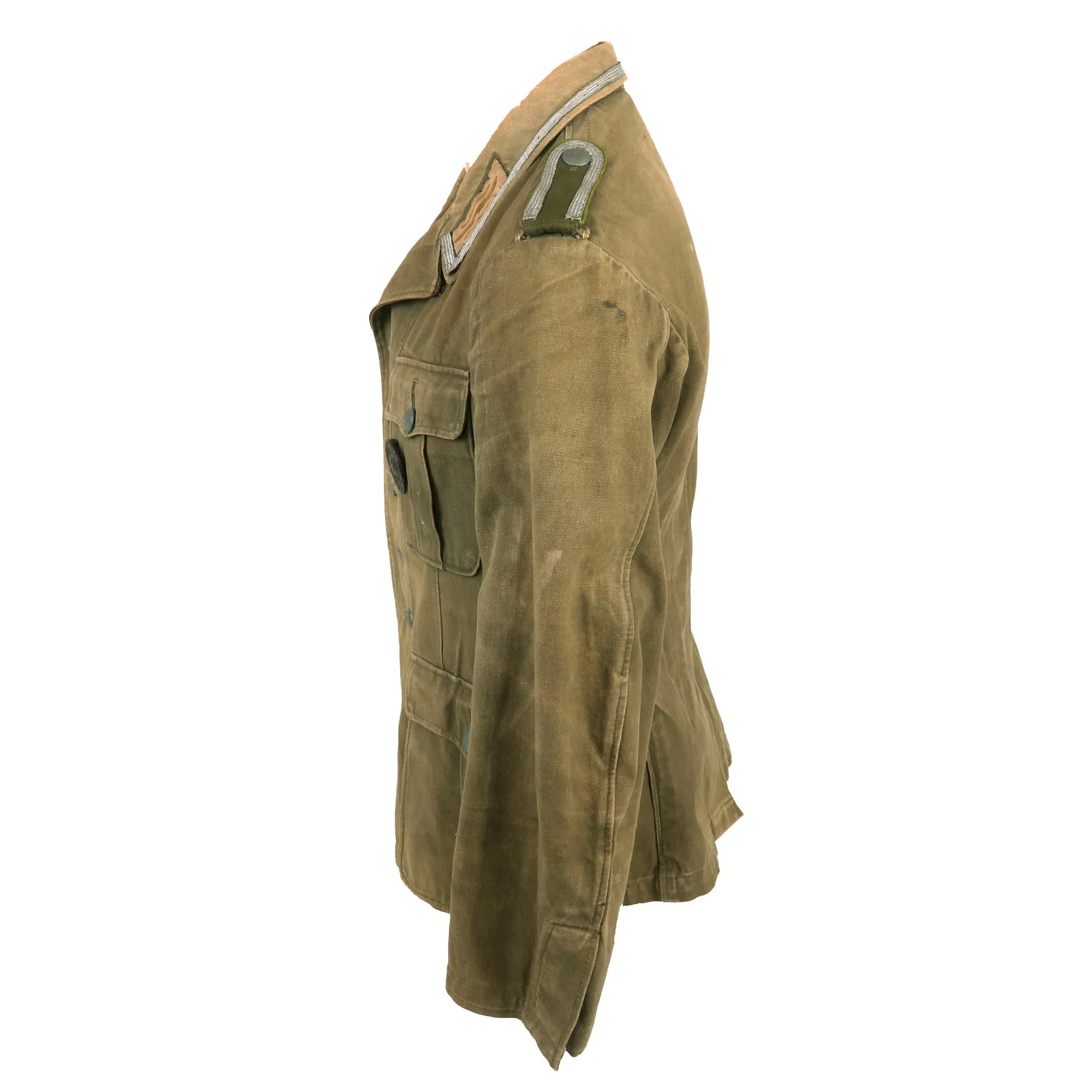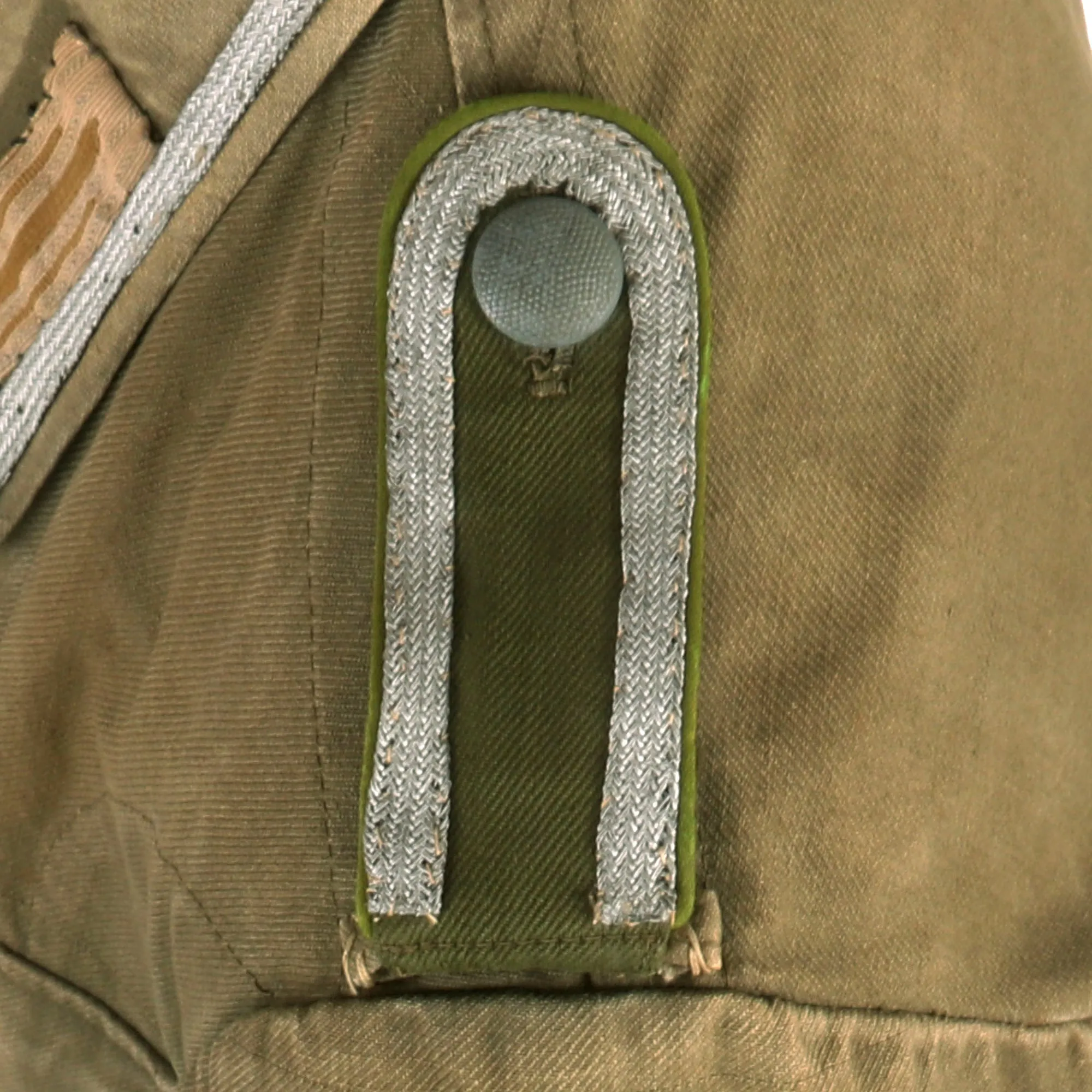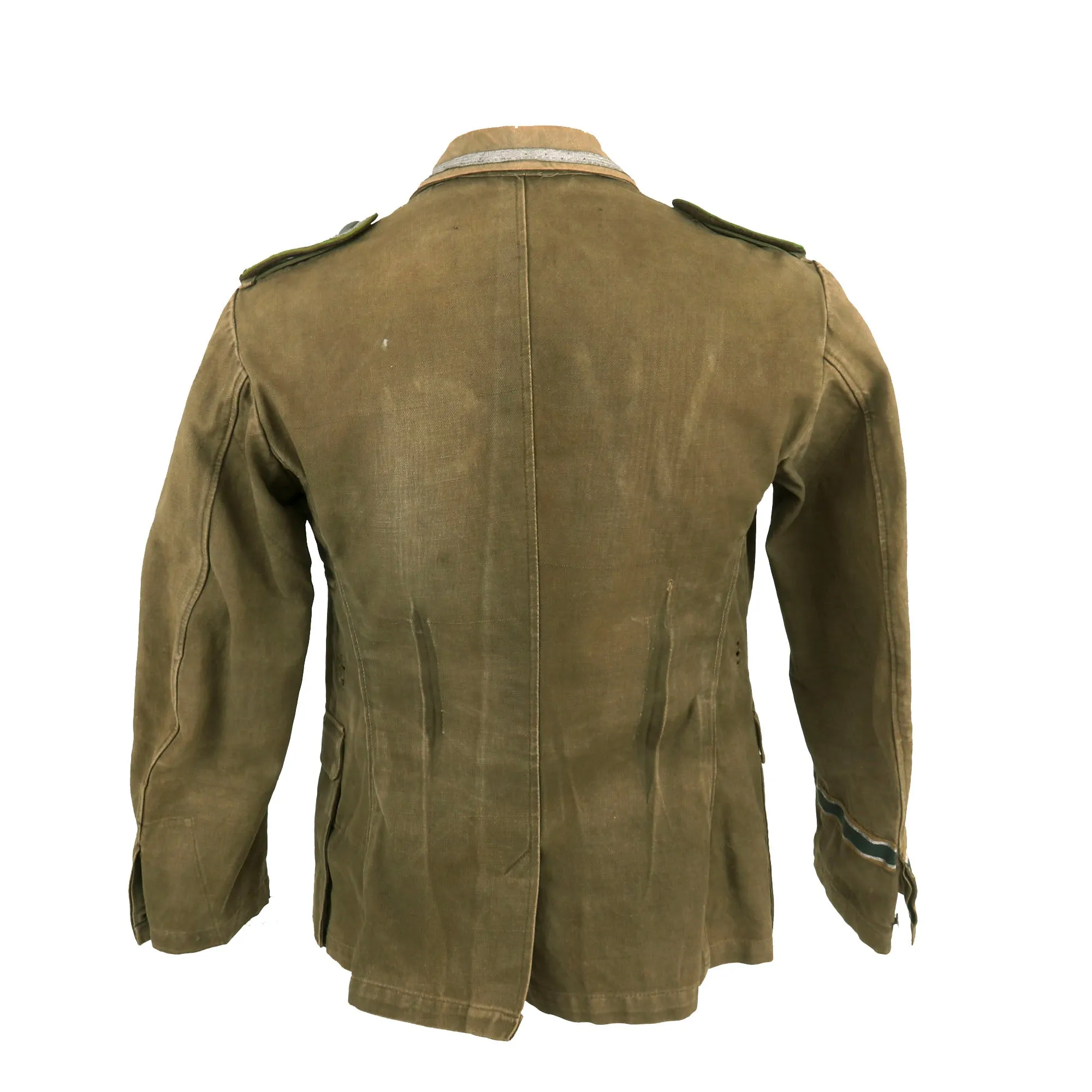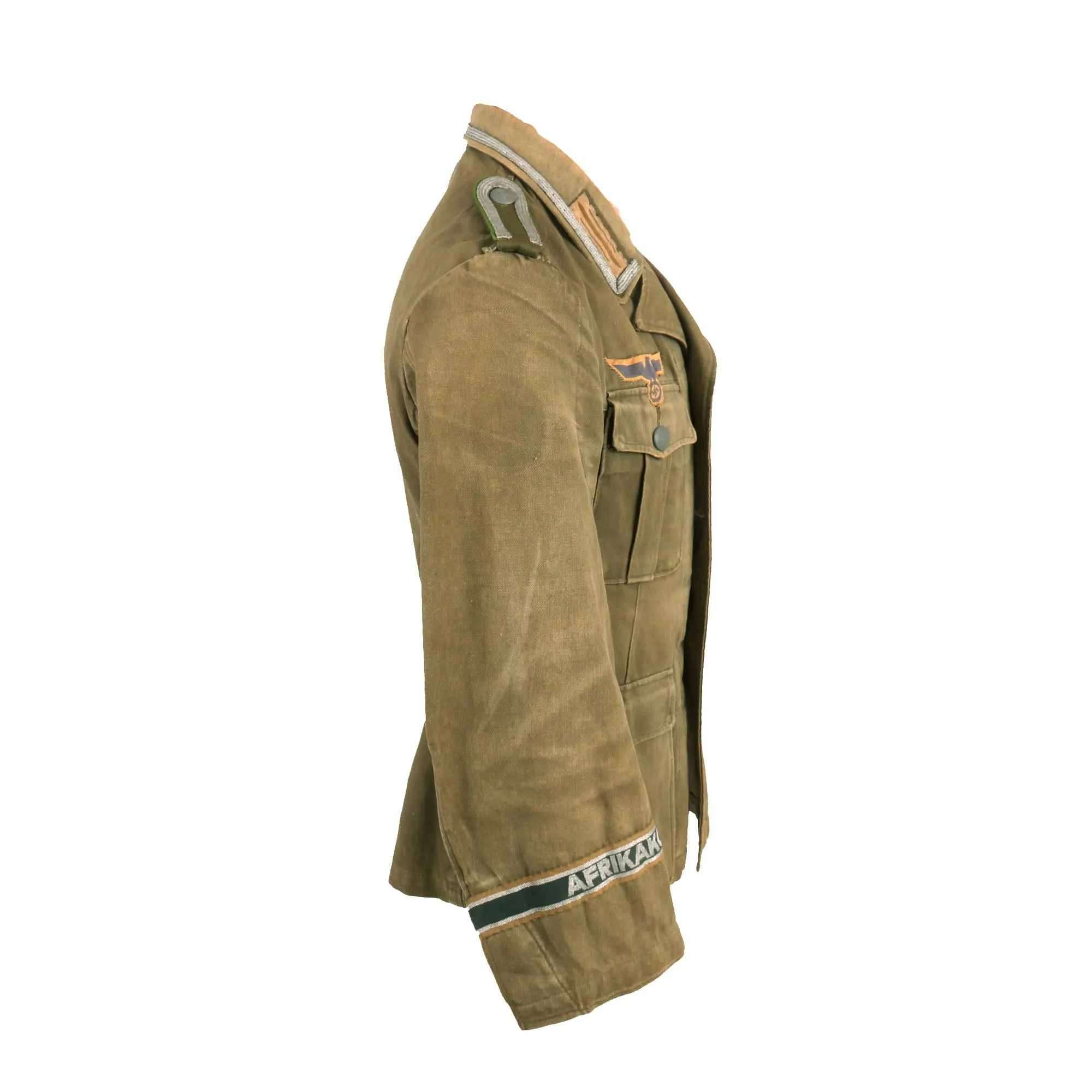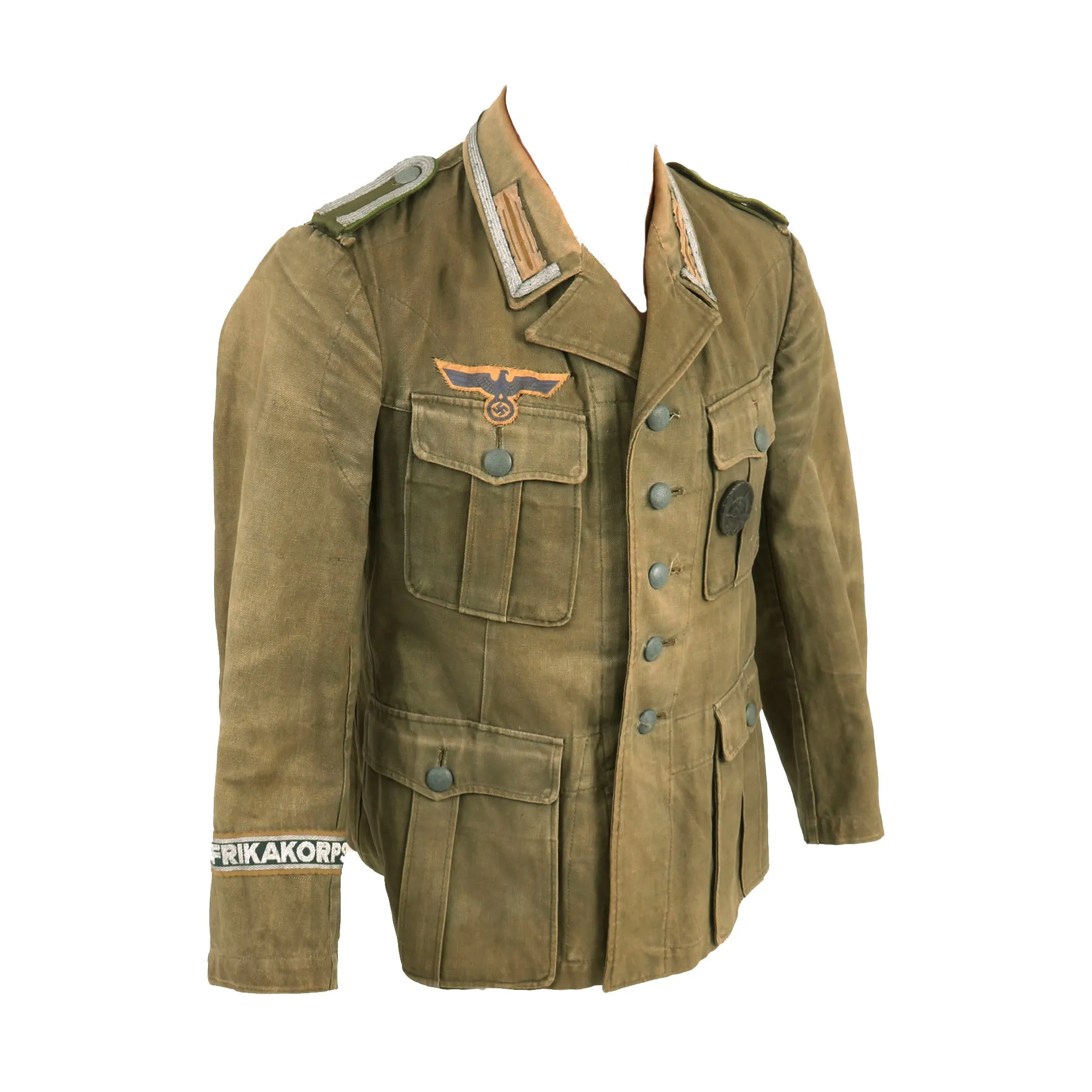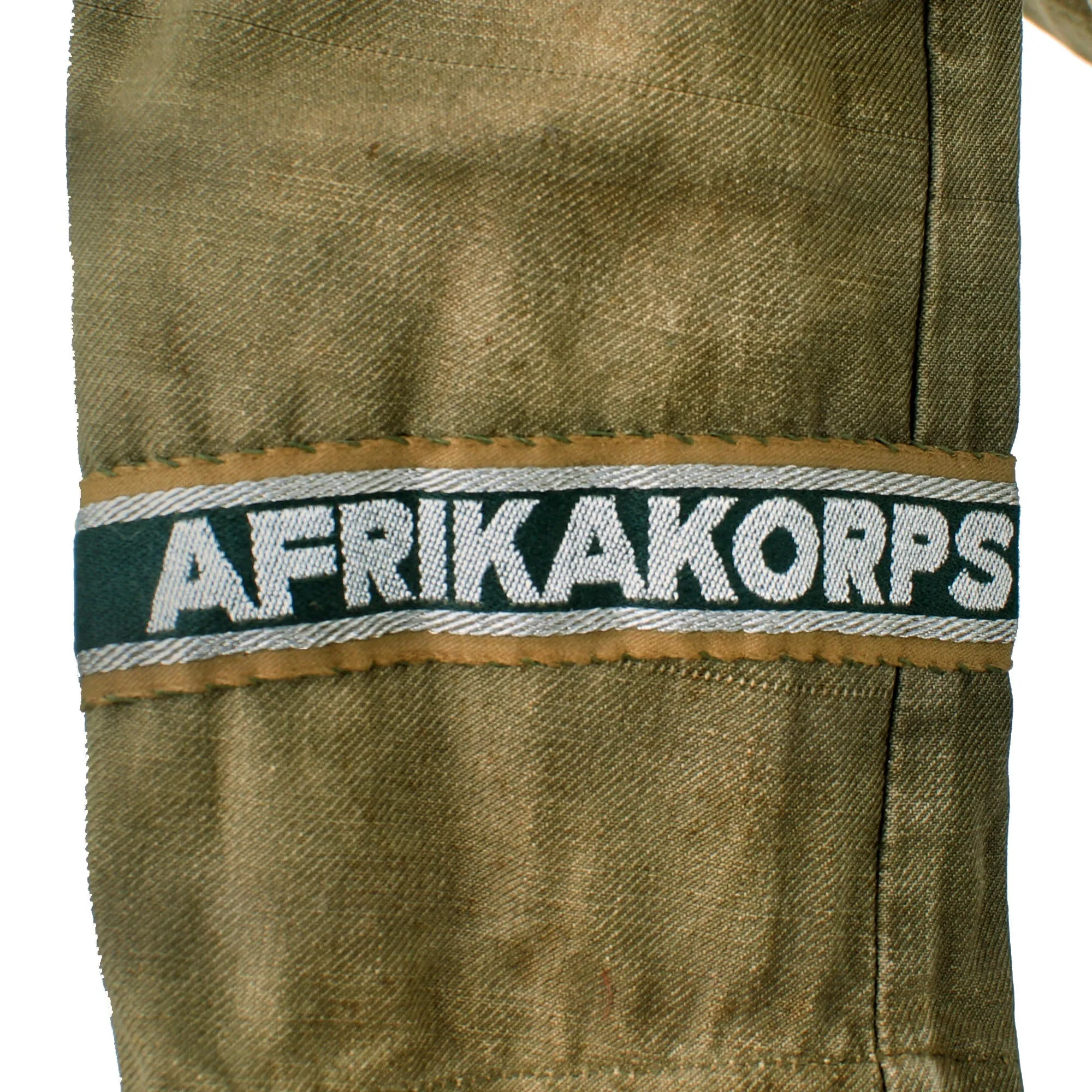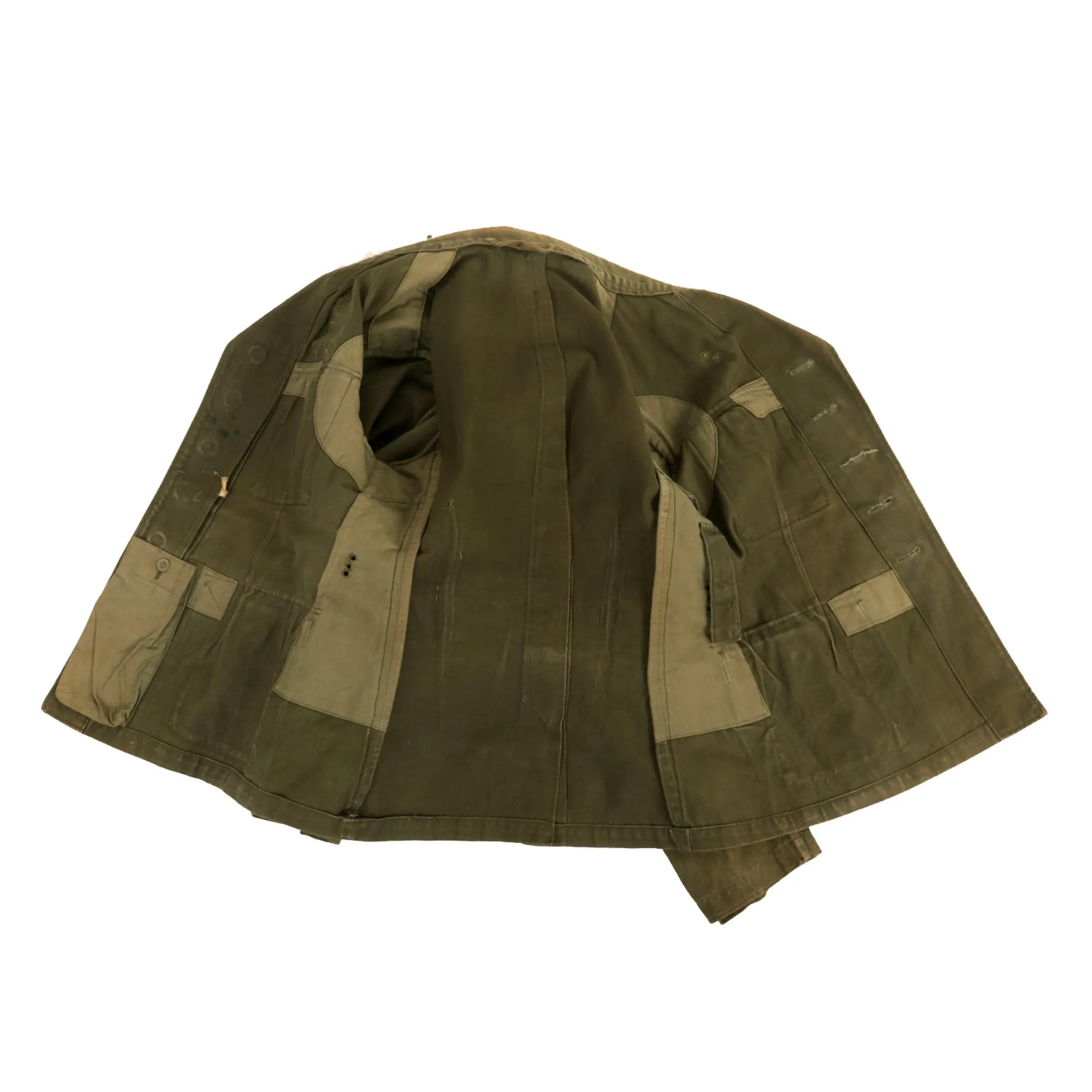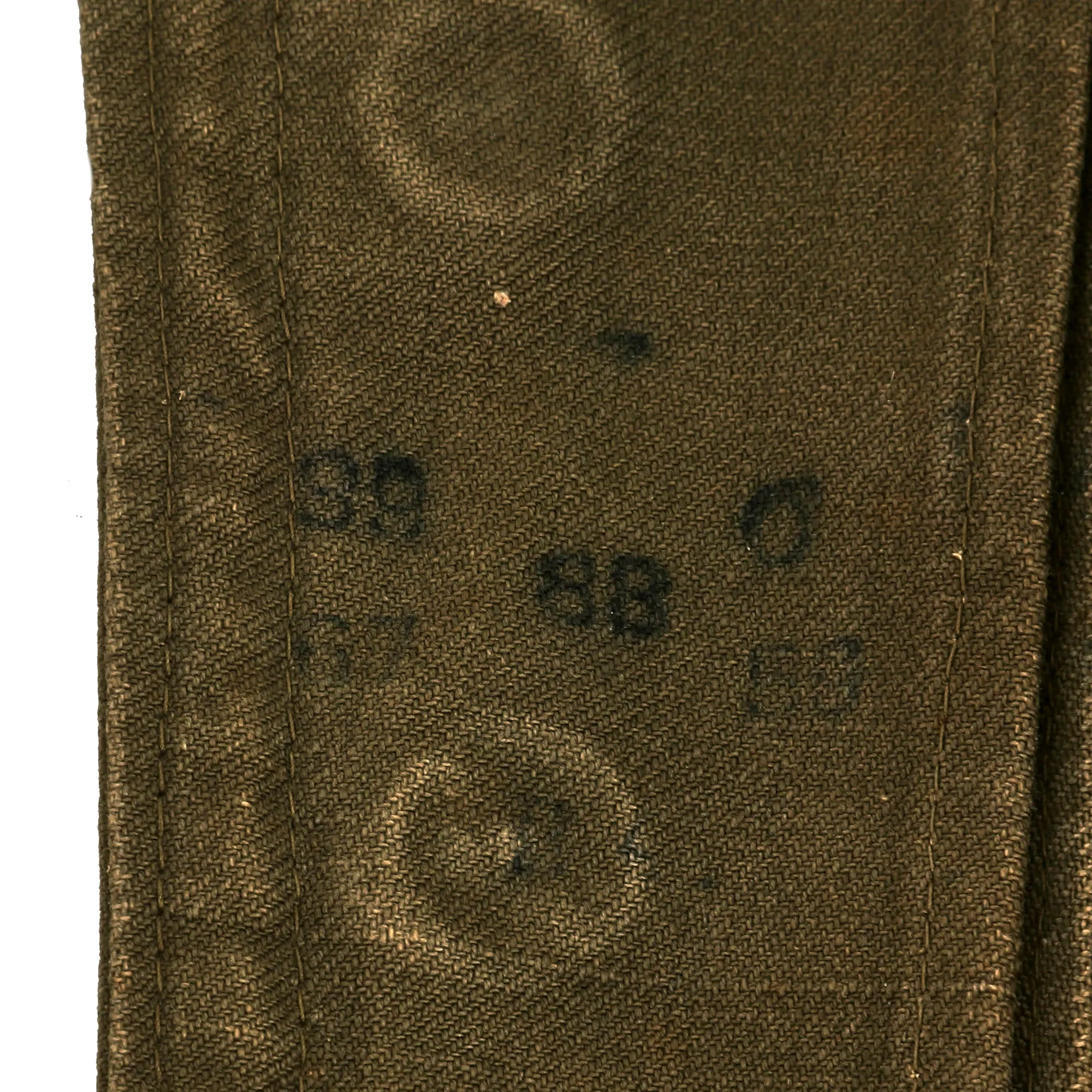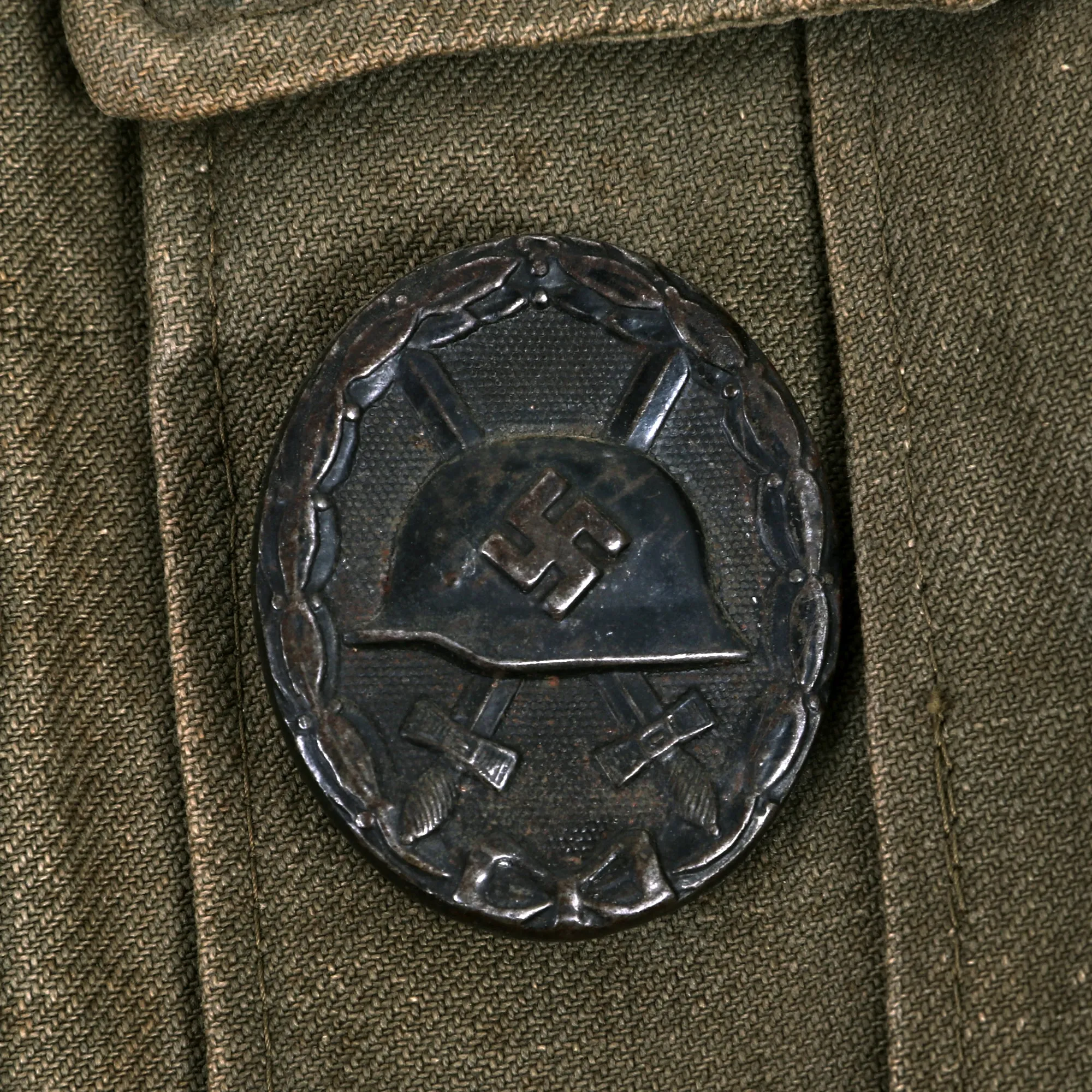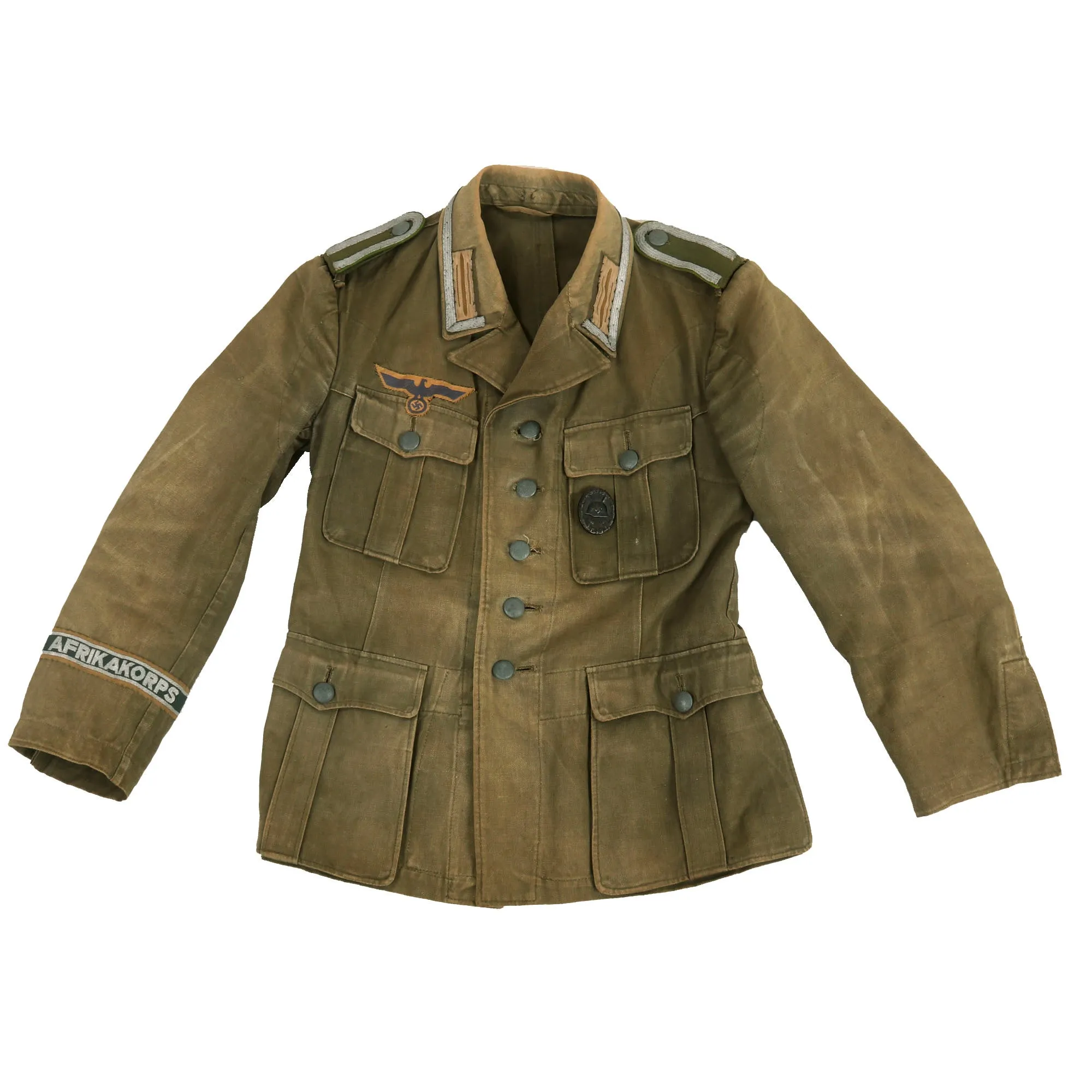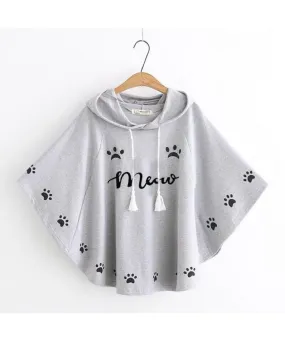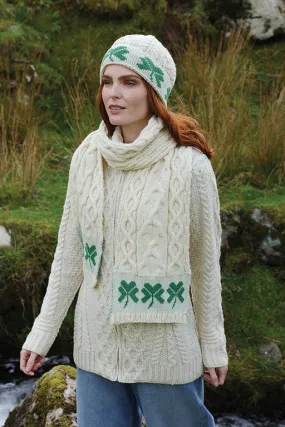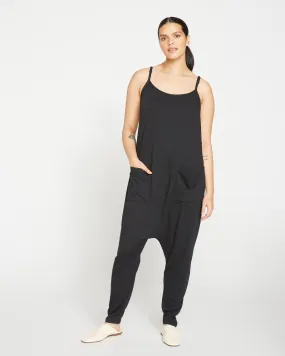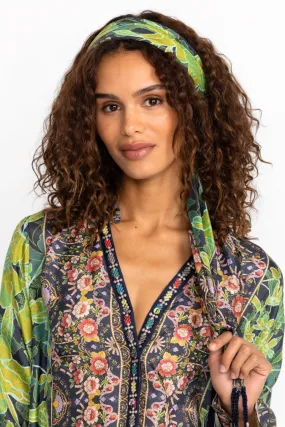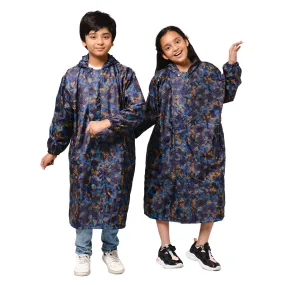Original Item: One-of-a-kind. During WWII, Great Britain had limited space and resources to deal with the numerous German P.O.W.s that were taken during the war, and requested that the U.S. help by accepting 175,000 prisoners. This number eventually grew to 425,000 by the end of the war, housed in 700 camps scattered throughout the United States.
Unfortunately, the U.S. had only brief experience with a limited POW population in the first world war, and was unprepared for basic logistical considerations such as food, clothing and housing requirements of the prisoners. Almost all German-speaking Americans were engaged overseas directly in combat efforts, and the American government feared the presence of Germans on U.S. soil would create a security problem and raise fear among civilians.
The prisoners were usually shipped in Liberty Ships returning home that would otherwise be empty, with as many as 30,000 arriving per month to New York or Virginia, where they were processed for distribution to camps. While they risked being sunk by their own U-boats on the ocean, good treatment began with the substantial meals served aboard. Upon arriving in America, the comfort of the Pullman cars that carried them to their prison camps amazed the Germans, as did the country's large size and undamaged prosperity.
With the large number of camps and how widespread they were geographically, the prisoner experience could vary widely. One thing that was in common though was that the German prisoners would usually be kept in their uniforms or work shirts, which were stripped of insignia and then had P W (Prisoner of War) painted onto the pants and shirts. Usually this would be added on the back of the shirt, and on the arms.
This is a very interesting example of a First Pattern Heer Tropical tunic, whose owner was taken as a prisoner of war, and most likely shipped off the the united states. The insignia and awards were completely removed from the jacket, and P W marked on both the sleeves and the back of the jacket. In this case however the owner kept the tunic after being released, and then insignia were re-attached to the uniform. It also looks like the "P W" markings were cleaned to remove them, however close examination of the back of the uniform and the sleeves still clearly show the traces of these markings, which look to probably have been added with white paint. The markings on the back are still relatively easy to see, while the left sleeve W is faint, and the right sleeve P is very hard to see.
When insignia were re-applied, they were definitely not done in the German WWII style, and there is really no way to determine whether or not these are the original insignia that were on the tunic. However they are all original WWII issue. We also can clearly see on the collar where there was NCO tresse and litzen installed previously. Definitely a uniform tunic with a very interesting history!
In early 1941, the German military began their conquest of southern Europe. Due to the warmer climates of these areas, the German Army needed to equip its troops with a more suitable form of dress, and replace the standard wool based feldgrau uniforms. The new "tropical" uniforms were lighter in weight, and dyed in colors ranging from light tan to dark olive.
This 100% authentic German World War Two First Pattern Heer Tropical Tunic is in lovely service worn condition, having seen long service during WWII and then later when the owner was a prisoner of war. We have seen this version called the M40 or the M41 Tropenbluse (tropical blouse), and it is the type closest in configuration to the original M36/M40 style. The front of the tunic has four pleated pockets (later examples were flat), and it has the early pattern scalloped pocket flaps on the breast pockets. The tunic is made out of a lightweight canvas denim-like twill material, which has been dyed a darker olive/tan, which then faded in areas to almost khaki.
The tunic features a BeVo tropical Heer Breast eagle, with the correct blue threads on a tan background. It has the correct tropical EM/NCO litzen on each side of the collar opening, and there is silver bullion NCO tresse stitched around the edge of the collar. There is also a somewhat worn steel Black Wound badge on the left chest pocket, with some holes indicating that possibly other awards were once attached. The lower right sleeve has an Afrikakorps Ärmelstreiffen (Africa Corps Cuff Title) sewn to it, which is the later BeVo embroidered pattern with a Latin AFRIKAKORPS marking, and totally correct.
The button attached style Unteroffiziere Schulterklappen (NCO shoulder straps) have olive green tops with a feldgrau wool underlayer, and olive straps. Each bears NCO tress around the edge, with openings at the outer sides.They are piped around the edge with Wiesengrün (Meadow Green), the Waffenfarbe (corps color) for the Heer Panzergrenadiertruppen (Panzer Grenadier Troops). These were motorized / mechanized infantry troops, and were legendary in the field. Originally called Schützen regiments, they had used the same Pink piping as the Panzer corps. Then in 1942 Infantry Regiments were renamed as Grenadier Regiments by Adolf H as a historical homage to Frederick the Great's Army, and the Schützen were renamed to Panzergrenadiers.
The shoulder straps do not have any rank "pips" installed, so these would indicate the lowest NCO rank of Unteroffizier, equivalent to a U.S. NCO rank of sergeant. We are not aware of any special title associated with Panzergrenadier NCOS.
The front of the tunic has five original buttons for the main closure, and four pocket buttons, all of which were originally a nice green color, but have since worn to a gray zinc patina. The buttons on this tunic are retained by round circlips from the rear, and all are non-magnetic, probably made from zinc. They do look to bear maker markings on the back, but they are faint. As is correct for this type of tunic, it is unlined except for specific areas, such as the sides, which have canvas reinforcement. It has the usual bandage pocket on the lower right interior, and the flap over the buttons still has visible faded maker, size, and depot markings, which we are unfortunately unable to read. There is also a stamped marking under the flap, which could possibly be a name.
The uniform tunic shows the expected wear from having been through a war and later captivity, and is really a fantastic piece with a long history. This would make a great addition to any WWII collection! Ready to research and display!
Approximate Measurements:
Collar to shoulder: 9.5"
Shoulder to sleeve: 22.5”
Shoulder to shoulder: 15”
Chest width: 17"
Waist width: 16.5"
Hip width: 20"
Front length: 26.5"
Terms such as M40 and M43 were never designated by the Wehrmacht, but are names given to the different versions of the Model 1936 field tunic by modern collectors, to discern between variations, as the M36 was steadily simplified and tweaked due to production time problems and combat experience.
Field Tunic (Feldbluse) Model 1936
When the NSDAP came to power in early 1933 the Reichswehr, the armed forces of the Weimar Republic, were near the end of a two-year project to redesign the Army Feldbluse (field-blouse). Beginning in that year the new tunic was issued to the Reichsheer and then the rapidly growing Wehrmacht Heer, although minor design changes continued to be made until the appearance of the standardized Heeres Dienstanzug Modell 1936. The M36 tunic still retained the traditional Imperial and Reichswehr uniform color of grey-green "field gray" (feldgrau) wool, but incorporated four front patch pockets with scalloped flaps and pleats (on Reichswehr tunics the lower pockets were internal and angled). The front was closed with five buttons rather than the previous eight, and the collar and shoulder straps were of a dark bottle-green instead of the Reichswehr grey. Compared to the Weimar-era uniforms the skirt of the feldbluse was shorter and the tailoring was more form-fitting due to Germany's adoption of mechanized warfare: soldiers now spent much time in the confined space of a vehicle and a shorter jacket was less likely to pick up dirt from the seats. It also included an internal suspension system, whereby a soldier could hang an equipment belt on a series of hooks outside of the tunic. These hooks were connected to two straps inside the lining, which spread the weight of equipment without having to use external equipment suspenders. The M36 was produced and issued until the very end of the war, though successive patterns became predominant.
SS field uniforms were of similar appearance externally but to fit their larger patches had a wider, feldgrau collar, and the lower pockets were of an angled slash type similar to the black or grey SS service-dress. The second button of an SS Feldbluse was positioned somewhat lower, so that it could be worn open-collar with a necktie. Due to supply problems the SS were often issued army uniforms.
History of the German Africa Korps
The Afrika Korps or German Africa Corps (Deutsches Afrikakorps or DAK) was the German expeditionary force in Africa during the North African Campaign of World War II. First sent as a holding force to shore up the Italian defense of their African colonies, the formation fought on in Africa, under various appellations, from March 1941 until its surrender in May 1943. The term "Afrika Korps" is pseudo-German (so-called "cod-German"), deriving from an incomplete German title. The German term referred solely to the initial formation, the Deutsches Afrikakorps (DAK), which formed part of the Axis command of the German and Italian forces in North Africa. The name stuck, with both news media and Allied soldiers, as the name for all subsequent German units in North Africa. The unit is known for having been commanded by Field Marshal Erwin Rommel.
The dry climate of Africa proved to be an issue with much of the standard leather field gear that the German Army usually used. It would dry out and crack quickly, and become unusable. To deal with this, the standard field gear such as belts, Y-straps, A-frames, bayonet frogs, and other items, were issued in special tropical web versions.




